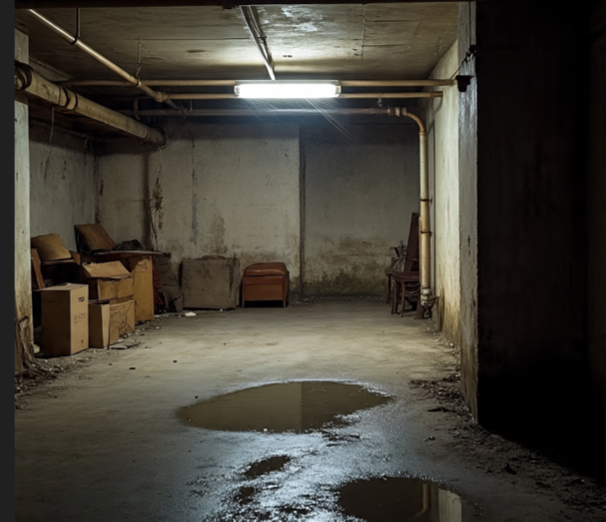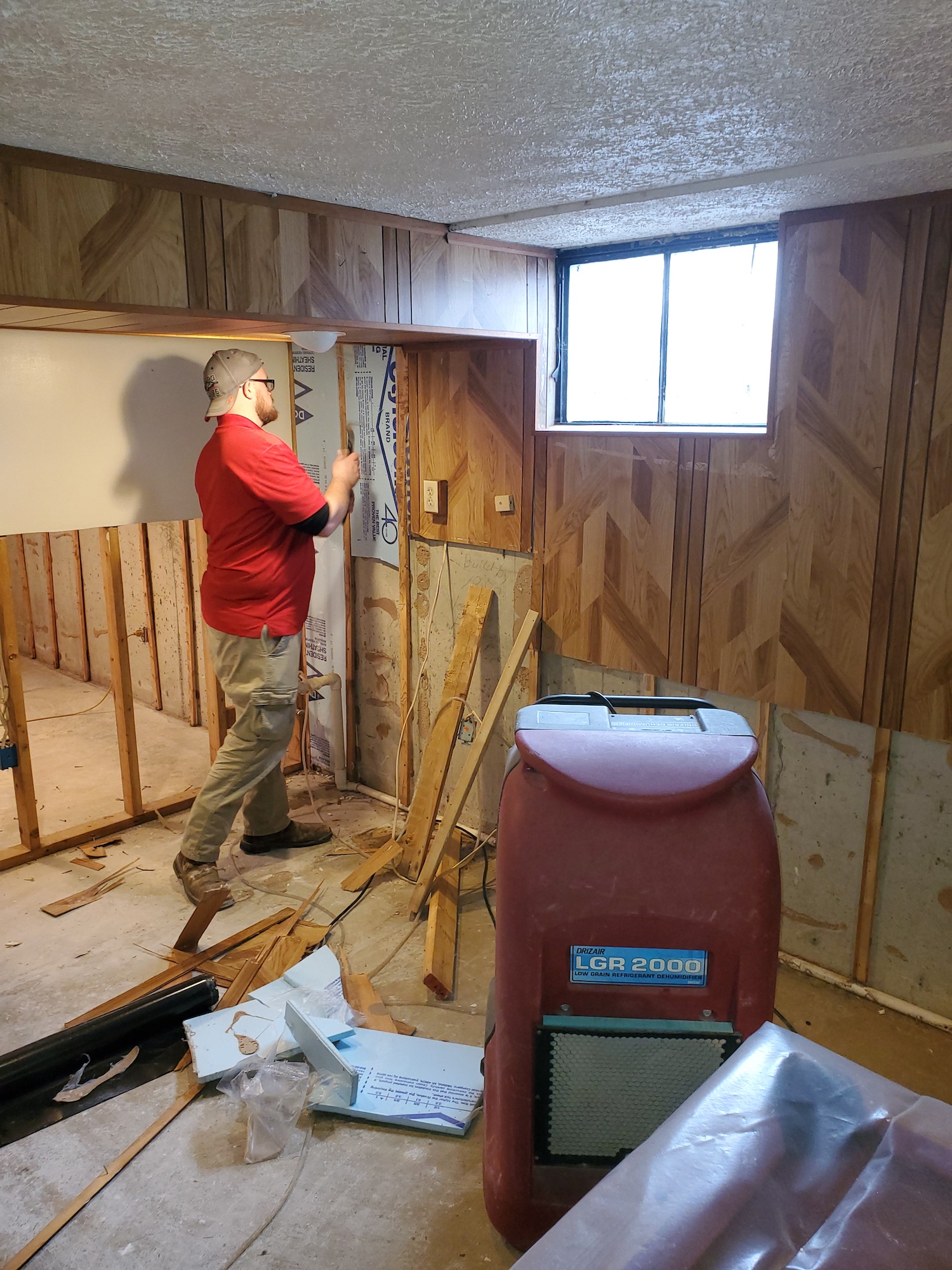Summary
A damp basement is more than an inconvenience, it’s a warning sign of potential water damage, mold growth, and even foundation issues. This guide explains the causes, red flags, and long-term risks of a damp basement. You’ll also get practical tips on identifying moisture problems early, DIY steps, and when to call professionals. A real-life story shows how ignoring early signs cost a homeowner thousands. Learn how to protect your home, your health, and your wallet.

Have You Noticed a Damp Basement and Wondered If It’s a Big Deal?
Many homeowners dismiss a musty smell or slight wetness in the basement. After all, it’s just a basement right?
But here’s the truth: A damp basement is your home’s cry for help. Ignoring it could lead to toxic mold, crumbling walls, or structural collapse. It’s not just about damage it’s about safety and future cost.
Let’s explore the signs, risks, and what you can do now to avoid a disaster later.
Real-Life Story: “If Only I Had Listened to That Smell…”
Meet Natasha. A busy mom of two in Ohio. Her basement always smelled a little musty. Nothing major. She figured it was normal for an older house.
Months went by. Then, the drywall near the floor started crumbling. Carpets got soggy. She even started noticing her kids coughing more at night.
By the time she called a restoration team, mold had spread behind the walls, the floor joists were weakened, and water had seeped into the foundation.
Total cost? $27,000. And the home was temporarily unliveable.
Natasha’s biggest regret? Ignoring the early signs.
Lesson learned: Don’t wait for damage you can see. Act when you notice what you feel or smell.
Why Is My Basement Damp?

Understanding the cause is the first step to prevention.
1. Poor Drainage Outside
Gutters that overflow or slope toward your home can channel water directly to the foundation.
2. Cracks in Foundation Walls
Tiny cracks can let in groundwater, especially after rain.
3. Plumbing Leaks
Hidden pipe leaks behind basement walls can slowly soak into materials.
4. High Humidity
Basements often have poor ventilation. Moisture in the air condenses on cool surfaces, making them damp.
What Are the First Warning Signs of Water Damage in a Basement?
These early indicators often go unnoticed or are dismissed.
- Musty odor (smell of mold or mildew)
- Peeling paint or efflorescence (white chalky residue on walls)
- Stained baseboards or drywall
- Damp carpet or warped flooring
- Condensation on windows or pipes
- Visible mold or mildew patches
- Rust on appliances or metal surfaces
If you notice two or more of these, it’s time to investigate further.
What Can Happen If I Ignore a Damp Basement?

It’s not just cosmetic. Long-term consequences can be severe.
1. Mold Growth
Mold thrives in damp, dark places. It can cause:
- Respiratory issues
- Allergies
- Serious health problems for those with asthma or compromised immunity
2. Structural Damage
Prolonged moisture can:
- Weaken wooden joists
- Crack concrete floors
- Rot insulation and drywall
3. Electrical Hazards
Water can damage wiring or outlets, risking electrical fires or shock.
4. Property Value Drop
If an inspection finds mold or water issues, you could lose thousands on resale.
How Do I Know If It’s Just Humidity or a Leak?
Here’s how to test:
- Tape a piece of foil to the wall or floor overnight.
- If moisture forms on the inside, it’s a leak.
- If on the outside, it’s condensation (humidity).
Still unsure? A moisture meter (cheap at hardware stores) can help measure exact levels.
Can I Fix a Damp Basement Myself?
Yes, in many cases. Here’s a practical approach.
Step 1: Control Exterior Drainage
- Clean gutters and extend downspouts at least 6 feet from the house.
- Regrade soil to slope away from the foundation.
Step 2: Seal Cracks
Use hydraulic cement or basement sealant on small cracks.
Step 3: Improve Ventilation
- Run a dehumidifier.
- Add exhaust fans or vent windows.
Step 4: Waterproof the Walls
Apply waterproof paint or membrane coatings designed for basements.
Step 5: Monitor Moisture
Place a hygrometer and moisture absorbers (like DampRid) in problem areas.
When Should I Call a Professional?
DIY can only go so far. Call a professional when:
- You see visible mold
- The smell worsens despite efforts
- You suspect plumbing leaks
- There’s flooding or standing water
- You want to finish the basement (waterproofing first is critical)
Professionals use infrared cameras, moisture mapping, and industrial drying systems to detect and fix deep problems.
For immediate assistance with fire damage restoration, contact PuroClean Disaster Restoration, Call (+1) 317-467-4436 or (+1) 260-263-9788 for Fort Wayne location.
PuroClean Disaster Restoration has over 19 years of experience in the fire damage restoration industry, with over 100 5 Star reviews on Google serving Indianapolis. Click on this link to see it’s online reviews and ratings.
What About Insurance? Will It Cover Basement Water Damage?
It depends on the source.
- Plumbing issues? Often covered.
- Flooding from outside? Not covered under regular policies you need flood insurance.
- Mold? Covered only if caused by a covered event.
Tip: Take photos and document signs early. It helps during claims.
How to Prevent Basement Moisture Year-Round
- Maintain gutters and drainage every season
- Install a sump pump (with battery backup!)
- Use dehumidifiers during humid months
- Insulate cold pipes to prevent condensation
- Keep basement clutter minimal (allows air flow)
Common FAQs
Why does my basement smell musty?
A musty basement smell usually indicates moisture buildup, which can be caused by poor drainage, high humidity, or hidden leaks. This can lead to mold growth if not addressed.
Is a damp basement dangerous?
Yes. A damp basement can lead to mold exposure, structural issues, and even electrical hazards if not resolved promptly.
What’s the fastest way to dry out a basement?
Use fans, a dehumidifier, and remove all wet materials. For major issues, call a water damage restoration company for industrial drying equipment.
Can mold grow in a damp basement?
Absolutely. Mold needs moisture to grow, and basements often provide the ideal environment dark, humid, and poorly ventilated.
Should I be worried about a little water on the floor?
Even a small puddle can indicate a bigger issue. Water that seeps through concrete or walls can cause hidden damage over time.
Final Thoughts: A Damp Basement Is a Red Flag, Not Just an Inconvenience
Basements are easy to forget about. They’re out of sight and usually not part of our daily routine. But what happens down there affects the whole home.
Don’t be like Natasha. Don’t wait until it’s too late.
If you notice dampness, smell something off, or see subtle signs, act now. Whether it’s a DIY fix or a professional job, early action saves you time, money, and serious stress.
Ready to Take Action?
Start with this 3-step checklist:
- Inspect: Look for signs today smell, stains, or moisture.
- Protect: Improve drainage and ventilation immediately.
- Resolve: Don’t hesitate to contact a local restoration expert if signs persist.
Your basement may be below you, but don’t put its problems beneath your notice.
